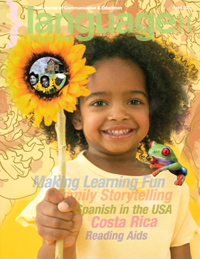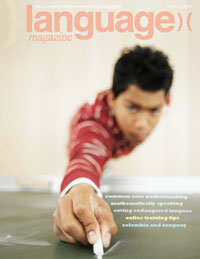The Quebec government must adopt a hardline approach if it intends to make French the common language of all Quebeckers, a report to the Parti Québécois government by the Conseil supérieur de la langue française (CSLF), concludes.
Entitled “Reinvigorating the Linguistic Policy of Quebec,” the opinion was made public by Robert Vezina, president of the Conseil, on the eve of hearings at the National Assembly on Bill 14, which seeks to reinforce Bill 101, the French language charter, first adopted in 1977.
The report supports the government in its efforts, particularly on making French obligatory in businesses with 25 to 49 employees. The use of French in workplaces in Quebec is steadily declining and needs to be addressed immediately, according to the province’s language advisory body.
The advisory body also expressed concern over the increase of bilingualism in the workplace, which, according its president, Robert Vézina, is becoming a “problem” in promoting the use of French, especially among immigrants.
“If we want neo-Quebeckers to be able to work in French, because that is what we ask them to do … and they go to the workplace and are being asked more and more to work in English, that’s a problem. That is what we are seeing now,” Mr. Vézina said during a news conference.
The Conseil points out that the prominence of French in the workplace rose from 1971 to 1989 but has declined since then. For instance, the percentage of employees in private companies who generally use French dropped to 59.7 per cent in 2010 from 70.8 per cent in 1989.
“We have to be careful in the way we analyze the data,” said the group’s vice-president, Martine Hébert, noting that the increased use of English in the workplace coincided with the NAFTA free-trade agreements and the expansion of the Internet. “Is it because English is progressing that French is regressing? That’s the problem. English is being used because of the changing business environment,” she explained.
Ms. Hébert also expressed concerns that the administrative red tape involved in enforcing the language regulations will become a burden . She said several of her members fear that government inspectors will use a heavy-handed approach in enforcing the law, which could hurt small businesses.
Another recommendation is to improve the knowledge of French among all Quebeckers, because about half of the adult population does not have adequate French skills to perform their jobs. “About half the population of Quebec is not well tooled … to be effective in the workplace,”. said Vézina.
The report recommends imposing tougher standards on anglophone students to ensure that they master French before graduating from college. However, the report stops short of making it mandatory for students who attend an English-language college to pass a French-language proficiency test to obtain their diploma.
Now, the National Assembly is holding public hearings on Bill 14, which proposes an overhaul of the French Language Charter, commonly known as Bill 101. Several of the recommendations in the advisory body’s report support the changes proposed in Bill 14.
The main opposition parties have threatened to defeat the Parti Québécois minority government’s bill if it refuses to introduce significant changes.








 Educational materials in the Arabic language, will be available for free online through the Open Book Project launched last month by the U.S. Department of State in cooperation with the Arab League Educational, Cultural and Scientific Organization (ALECSO).
Educational materials in the Arabic language, will be available for free online through the Open Book Project launched last month by the U.S. Department of State in cooperation with the Arab League Educational, Cultural and Scientific Organization (ALECSO).
